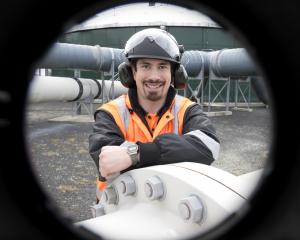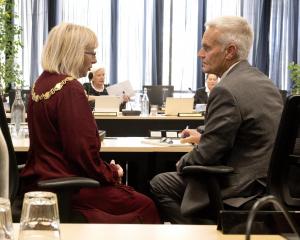
Instead, a staged approach to the development was expected to overcome the hurdles and could even accelerate elements of the project, council staff said yesterday.
A staff report to yesterday's full council meeting said engineering, commercial and environmental feasibility studies needed for the project were all now complete.
The details remained confidential for now, ahead of an application to the Government's $3billion Provincial Growth Fund, which was expected to be submitted before the end of the year.
Council community and planning group manager Nicola Pinfold said the feasibility studies showed the waterfront vision ''can be constructed, subject to funding and consenting''.
However, they also identified commercial viability challenges and resource consent risks, she said.
As a result, the original master plan had been revised to reduce costs and risks and increase commercial viability, she said.
The changes included a staged approach to the development that responded to ''market demand''.
That could, for example, see the low-rise hotel envisaged as part of the wider redevelopment built in stages, beginning with one wing initially, she said.
Other changes included pushing the buildings' development envelopes further back on to land, to minimise construction over ageing wharves and avoiding reclamation.
''The scale of some of the building is also being reviewed,'' she said.
Despite that, all parties remained committed to the ''big vision'' behind the project, she said.
''That's a pretty standard process - that when you have a dramatic vision, that it costs a truckload, so there's usually a refinement process.
''We're still committed to delivering the whole vision.''
The feasibility studies by Beca Ltd and Colliers International, together with the completed business case and recommendations for a new agency to manage waterfront development, would be presented to the next council meeting in November.
Councillors did not discuss the details of the latest update at yesterday's meeting, after noting they had had private briefings on the contents.
The Ministry of Business, Innovation and Employment has already given feedback on the project, noting the need for evidence it will create jobs, enhance regional development and had community support.
The staff report, by council senior policy analyst Mike Seymour, said the business case would cover job creation and economic development and community support had been demonstrated during the council's 10-year plan.
More public engagement was planned, including the display of waterfront models inside a Civic Centre exhibition space, which has begun.
The development plan would include a hub of new ''signature buildings'', public spaces and amenities, as well as a mix of offices, retail outlets, cafes and apartments, built around the Steamer Basin.
The concept was developed by Damien van Brandenburg, of Architecture Van Brandenburg, aided by businessman Ian Taylor, and backed by the city council, University of Otago, Port Otago and Ngai Tahu.
Any decision on the Provincial Growth Fund application would require Cabinet approval and was not expected until February.
Comments
Grandiose and delusional. DCC companies already have $600m in debt. Do we need to increase our debt to over $1billion? (remember the white elephant stadium cost about $300m). That is $50m pa in interest alone on $1billion- that is a lot roads foregone.
How many ratepayers supported this in the last ten year plan? None.
Because it wasn't in there. Yet we have this council steam rolling it through with secret reports and government funding applications. Another abysmal transparency failure from the Cull council. This is such a big project, it should be put on hold so the rate payers can get a chance to have their say in the next ten year plan before any further ratepayer money is spent on it.
It would be difficult to imagine a design less in keeping with the aesthetics of the upper harbor. It would fit right in to The Palm at Dubai, but not here.












